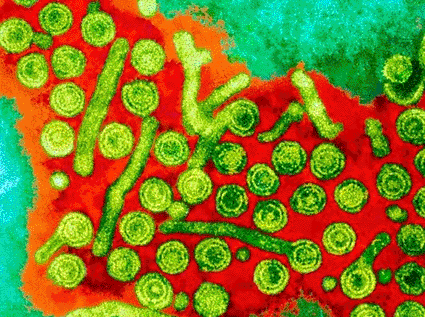Test Screens Source Plasma for HIV, Hepatitis B, and Hepatitis C Virus
By LabMedica International staff writers
Posted on 15 Dec 2009
A nucleic acid technology (NAT) test for screening plasma specimens can now be used to screen source plasma in pools comprised of up to 96 individual donations.Posted on 15 Dec 2009
The cobas TaqScreen MPX test is a qualitative, in vitro test for the simultaneous, direct detection of the human immunodeficiency virus (HIV-1 Group M RNA, HIV-1 Group O RNA, HIV-2 RNA), hepatitis C virus (HCV) RNA, and hepatitis B virus (HBV) DNA in human plasma. The MPX test runs on the fully automated, real-time Roche PCR cobas s 201 system, designed to increase processing efficiency with a unique modular design and ready-to-use reagents. The system has the capability of running multiple channels using multi-dye technology, enabling simultaneous detection of several viruses. The cobas TaqScreen MPX and the cobas s 201 system were developed by Roche (Basel, Switzerland). The test has been approved by the U.S. Food and Drug Administration (FDA), and it has received the European CE marking for screening source plasma. Roche is also developing another multi-dye assay on the same platform, the cobas TaqScreen DPX test, which is designed to provide simultaneously a quantitative result for B19 virus and a qualitative result for hepatitis A virus.

Image: Colored transmission electron micrograph (TEM) of Hepatitis B viruses (large green circles), a cause of liver inflammation (Photo courtesy of Dr. Linda Stannard, UCT).
"As a standalone PCR system the cobas s 201 system and cobas TaqScreen MPX test for HBV, HIV, and HCV, provides a simple user interface while improving process control and lab efficiencies,” said Douglas Lee Sr., Ph.D., director of pathogen safety and research at Talecris Biotherapeutics (Research Triangle Park, NC, USA), one of the largest fractionators in the United States and a clinical trial site for the new test.
"Roche is committed to providing the broadest coverage and an easy-to-use menu of screening tests to ensure the highest safety of blood and plasma products,” said Daniel O'Day, head of Roche Molecular Diagnostics. "The expanded use of our multiplex test, which has been widely adopted and has demonstrated excellent performance worldwide, is one more step toward that goal.”
Many countries have implemented NAT testing in order to ensure further the safety of blood and blood products. In Western Europe and North America, routine NAT testing, which can detect HIV-1 and HCV in the early stages of infection, has reduced the risk of transfusion-transmitted infections to negligible levels. The importance of HBV in transfusion-transmitted diseases is increasingly being recognized and NAT screening for HBV is now being implemented in some countries.
Related Links:
Roche
Talecris Biotherapeutics














